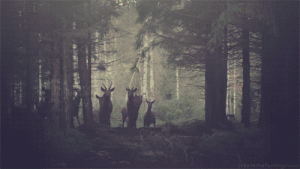
https://ezgif.com/add-text/ezgif-4-383b075723.gif
Wonder at wild light,
Flightless flee through fiery night.
Endure regrowth’s wait
I’d like to use GIFs as prompts for Haiku with an ELL2 English class.
GIFs are appropriate prompts for haiku in that they are short, moving pictures that capture a brief moment in time, in keeping with Haiku’s philosophy. By choosing timely, or seasonal, GIFs, the teacher can further capture this notion.
That GIFs are images also resonates with the purpose of haiku. As Ezra Pound appreciated, the power of haiku lies in its brevity and juxtaposed images. He wrote, “The image itself is speech. The image is the word beyond formulated language” (Poets.org. Web. August 2017).
Beyond the poetic form, ELL learners would expand their vocabulary, notice and count syllables, and use the present tense, to make meaning using formal Haiku form. In the process, they would build their confidence in engaging in meaningful writing practices.
Steps in the lesson:
- Have Ss read exemplars of traditional Haiku.
- Prompt Ss to notice similarities among the exemplars: syllables, lines, theme, subject, verb tense, adjectives, mood…
- T instructs about elements of Haiku: present tense, 5/7/5 syllabic lines, about nature, simple
- T shows Ss GIFs, asks Ss to find words to describe the GIF. Ss can use dictionaries.
- T can further challenge students with parameters such as: only words beginning with ‘p’ (adding alliteration), or placing a number limit, such as 10 words, or 20 words, 8 adjectives, 2 nouns, 2 verbs (thus focusing learners on parts of speech), etc…
- T hands out paper slips/recipe cards, asks Ss to write favourite words on cards (one word per card)
- Asks Ss to recall Haiku form – writes on board
- Ss compose their Haiku, counting syllables, and placing cards in order. When students want to use words others have found, the classmates can help one another understand the definitions, parts of speech, etc., practicing speaking skills, building community.
- Next, Ss write finished Haiku on separate paper. Ss are encouraged to make as many Haiku as they can.
- Ss read Haiku aloud to class. Ss share meanings and explain new vocab with one another – Ss teaching Ss.
Exemplars:
| In the twilight rain these brilliant-hued hibiscus – A lovely sunset- Matsuo Bashō |
Toward those short trees We saw a hawk descending On a day in spring.- Masaoka Shiki |
First autumn morning the mirror I stare into shows my father’s face.– Muakami Kijo |